Protest T-shirt Exhibition
Been there, done that, got the T-shirt
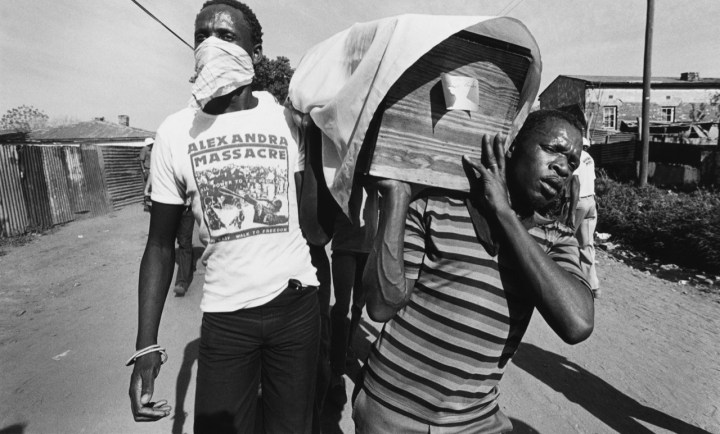
An exhibition of struggle era T-shirts is a reminder of the bodies in the firing line and how a cotton undergarment came to be a political weapon.
Not so long ago, wearing a T-shirt with a slogan could get you arrested, killed even. Declaring political allegiance across your back or your chest was daring to use your body as statement.
It turned cheap cotton tees into powerful struggle weapons in apartheid South Africa of the 1970s and 1980s. Many of those T-shirts have today been repurposed as pyjamas, floor polishing rags or tossed into jumble. But some have survived and some stand as social record and struggle history ephemera.
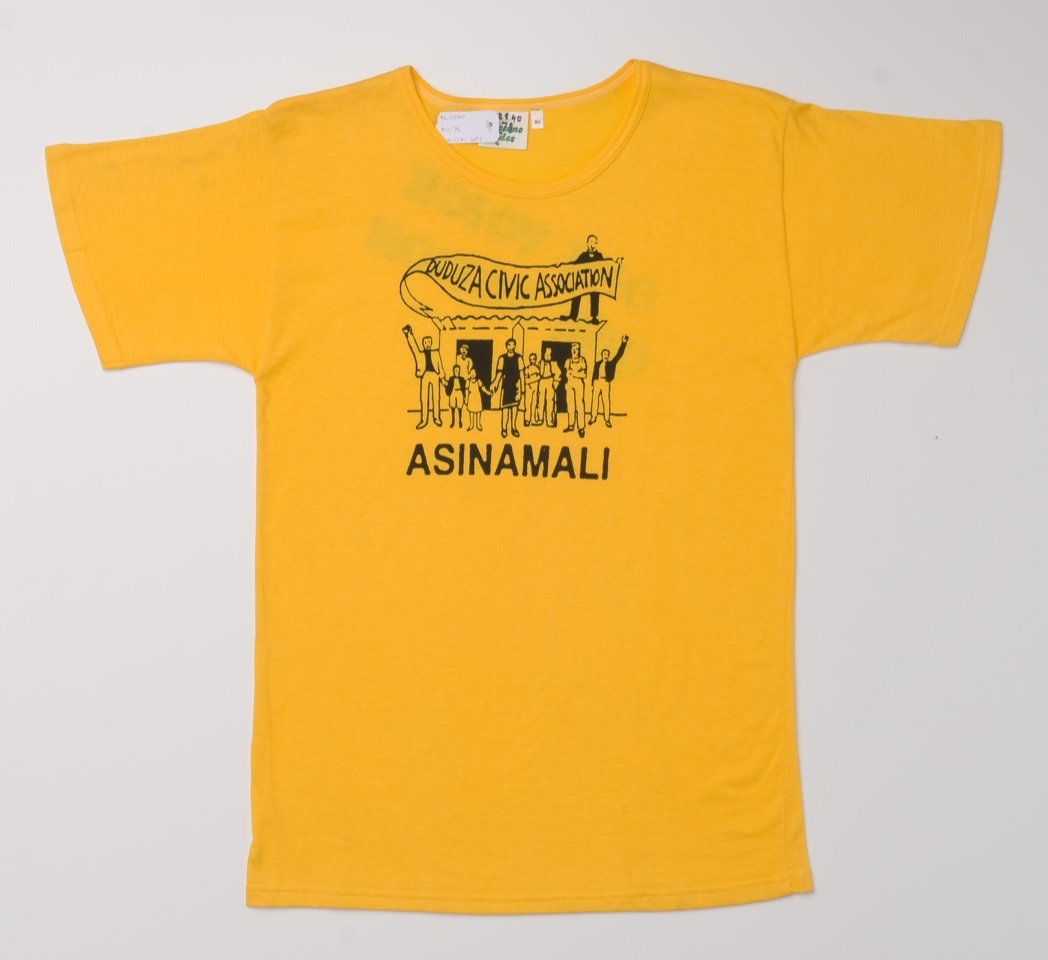
The front of a Duduza Civic Association T-shirt. The bright colours were meant to stand out to make the wearer and the slogan unequivocally visible.
The South African History Archives (SAHA) has a collection of about 500 struggle T-shirts and this week they present a selection of these garments in an exhibition at Kalashnikovv Gallery in Braamfontein. The T-shirts represent the ordinary people who took a stand. The logos and slogans are flashbacks to when political organisations and people were routinely banned in the 1970s and 1980s. There are slogans like “Away with Bantustans”, “We Remember You Solomon Mahlangu” and “Troops out of the Townships”.
“SAHA has over 3,000 struggle posters but through the years activists have also donated their T-shirts and recently we realised that this is a very different collection and should be shown,” says Dr Geraldine Frieslaar, director of SAHA.

A simple silk screened T-shirt with a powerful struggle slogan.
“A T-shirt is personal; the wearer is choosing to make a point, choosing to be seen. In contrast, a struggle poster is put up anonymously, maybe in the dark of night and it may be pulled down as fast as it was put up or it just fades away – a T-shirt lasts longer, people take it away with them and many people keep them.”
Frieslaar says the struggle T-shirt exhibition is also a way for the present to speak to the past, a reminder of the historical threads pulled through to current day struggles. It’s also a story of how a crew neck white T-shirt became a canvas for powerful messaging.

Activists and marchers proclaim their loyalties and demands with T-shirts as banners.
The simple short-sleeved slip-on is believed to have entered life as a US navy issue undergarment in the early 1900s. It evolved from utility to fashionable outerwear and became popular when Marlon Brando’s biceps bulged unapologetically from under the woven cotton in A Streetcar Named Desire in 1951.
“Today the T-shirt may be mass-produced in China and technology for printing has changed but it still represents a powerful form of modern struggle. When you see a young person’s T-shirt and it reads ‘Proud, Indigenous, Fierce’ – you know where she stands,” says Frieslaar.
Frieslaar points out too that the week-long exhibition located in a start-up Braamfontein gallery is significant because only a few years back from this university precinct was where #FeesMustFall became a movement.
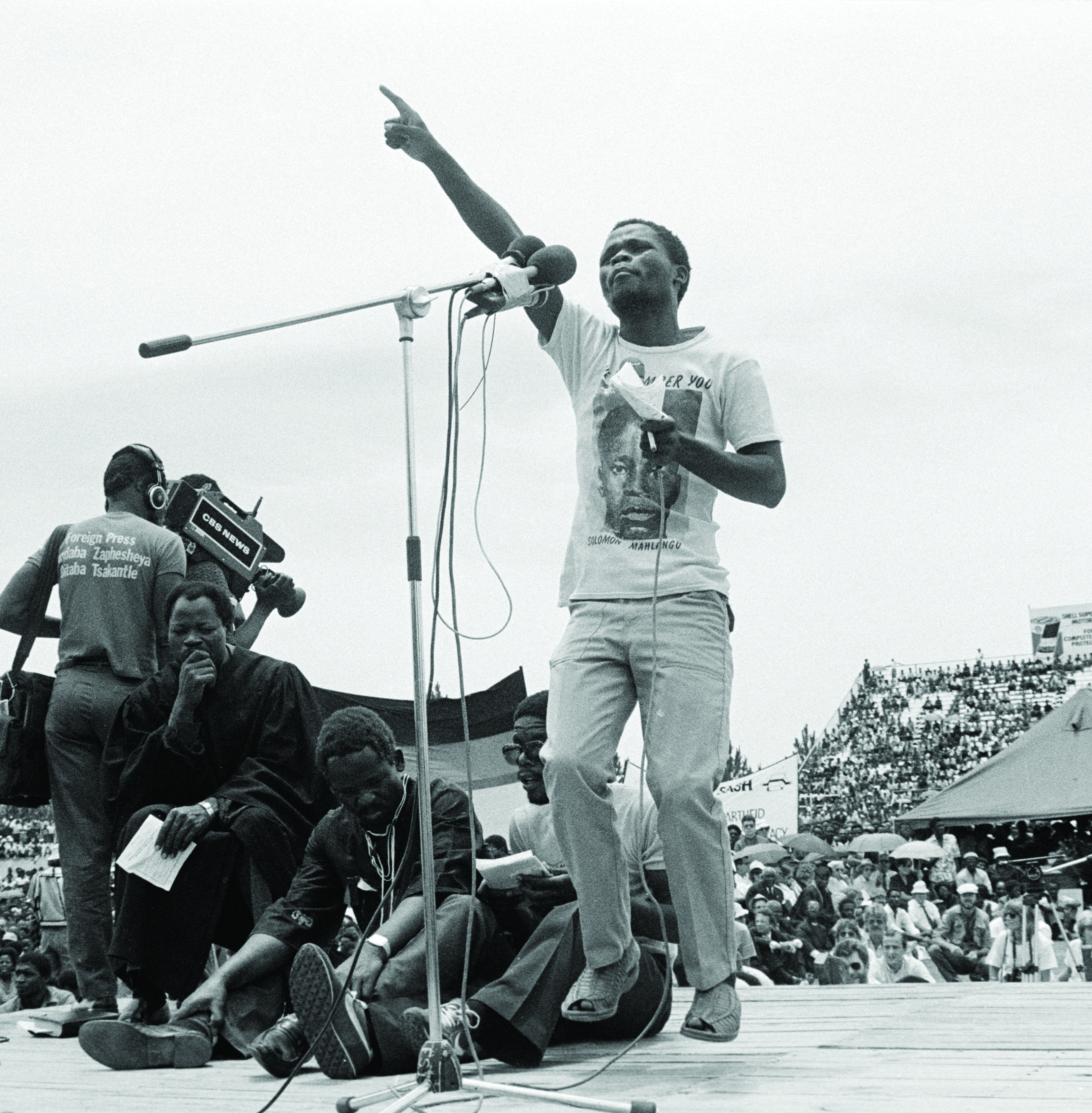
Rallies and protest gatherings made T-shirts powerful as mass expression.
Frances Andrew, curator for the exhibition and a director at Library Special Project had been researching South Africa’s struggle T-shirt for her own master’s research. She says: “The sizing of struggle T-shirts was often all wrong, they were cheap and of poor quality and the designs were basic. That’s because their purpose was not about being worn. It was about wearing your heart on your sleeves – the T-shirts were gender unspecific and articulate,” she says.
Andrew says in her research she collected stories of how security branch police stripped shirts off activists and kept them as trophies – one police officer even photographed his dog dressed in a confiscated T-shirt. There are also stories of how packages of T-shirts were intercepted by apartheid operatives, soaked in poison and repackaged and reposted. It speaks to an intimacy, a closeness of fabric on skin, also literally of those who had skin in the game advancing the struggle.
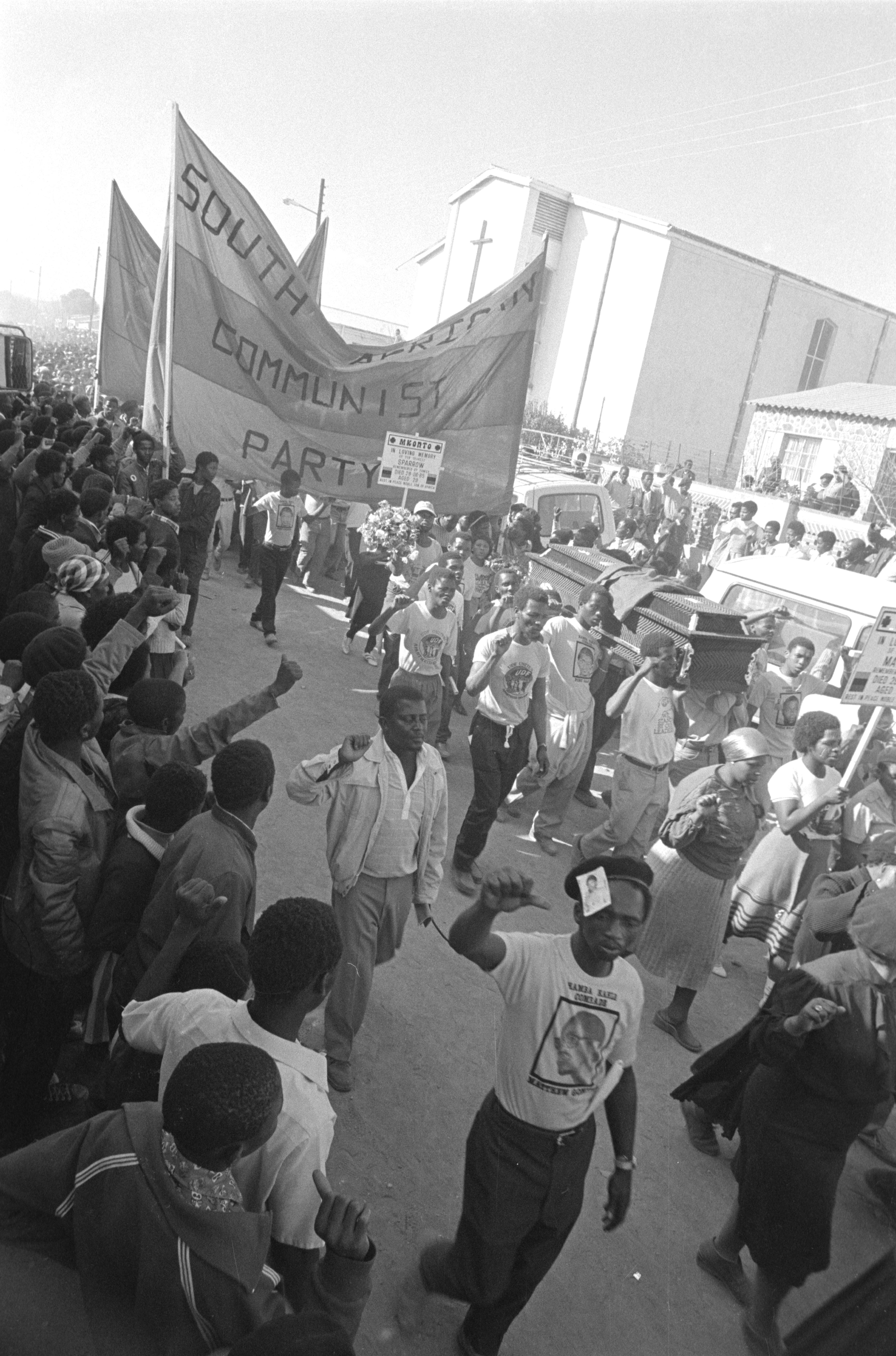
Protestors at a SACP rally wear T-shirts bearing the face of banned leaders.
“Still people chose to wear the T-shirts. It was making themselves vulnerable and visible. At the same time wearing a ‘uniform’ shielded the wearer by becoming part of bigger, powerful whole of many people wearing the same T-shirts at rallies, gatherings and funerals,” she says.
Andrew writes in her exhibition notes: “The body in the T-shirt became a site of resistance, the physical self willingly identified in order to resist, and it was only in the wearing of the T-shirt that this message of resistance, solidarity, testimony, commemoration and defiance was produced.”
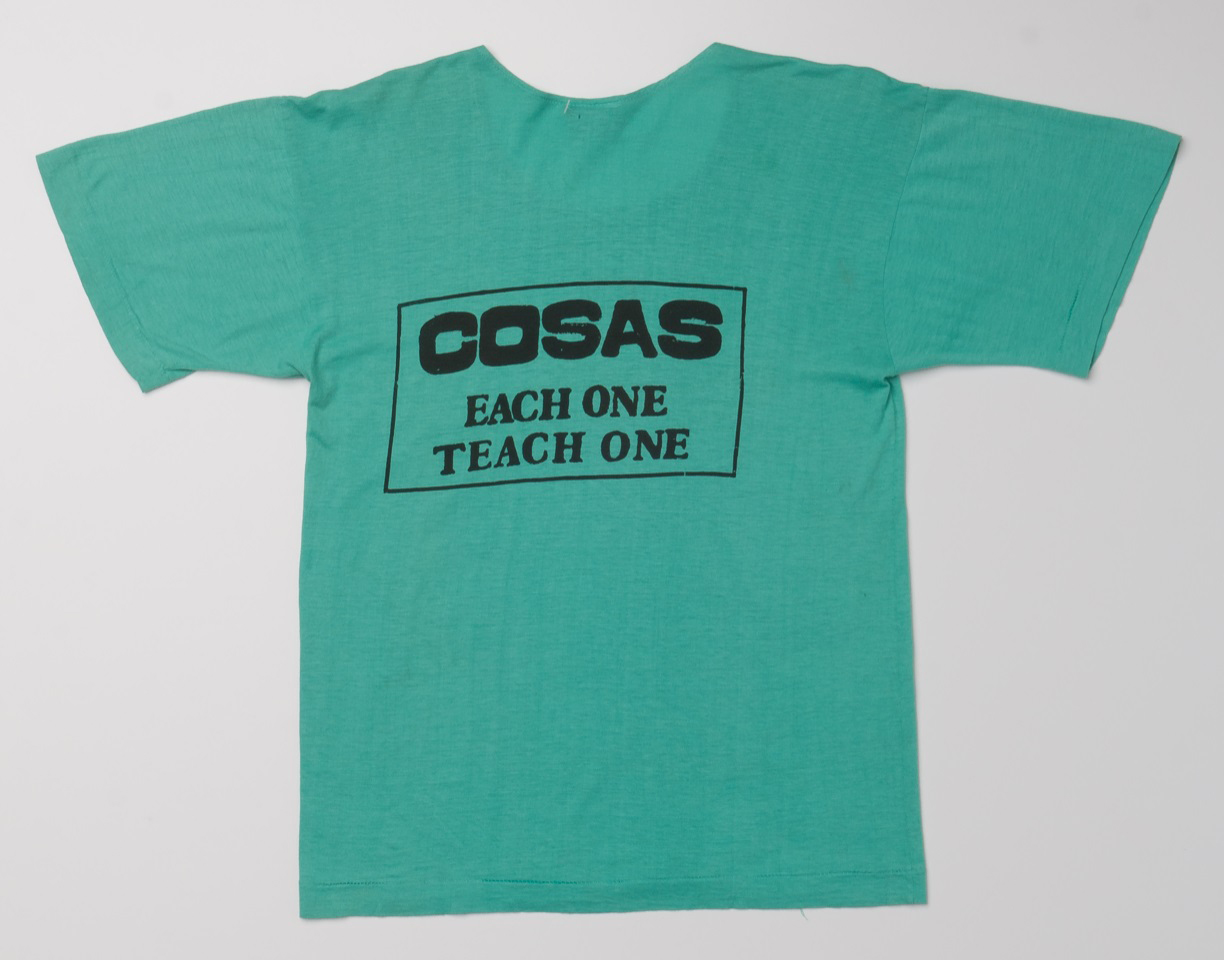
A T-shirt with a simple slogan and design meant that activists could hand make T-shirts in backyards workshops at low cost.
The selection of about 35 T-shirts for the exhibition is a sample of thousands of T-shirts produced in the decades before the end of apartheid. The story of their production from backyard workshops to larger scale operations also mirrors the timeline of underground resistance, to unbanning, to democracy.
Maurice Smithers was involved together with a handful of other activists printing struggle T-shirts in the mid-1970s and 1980s. He remembers the crude, clandestine operations, needing to shift workshops from Newtown to Mooi Street in Johannesburg to dodge security branch police.
“We made T-shirts mostly for the UDF but I also remember ones about forced removals, the tri-cameral parliament and for trade unions,” says Smithers.
Smithers, who was a speaker at the Tuesday night launch of the exhibition, says the T-shirts were made by simple silk-screening. This allowed for their printing operations to be cheap, transportable and easy to be replicated in their efforts to train other activists to print T-shirts in different parts of the country.
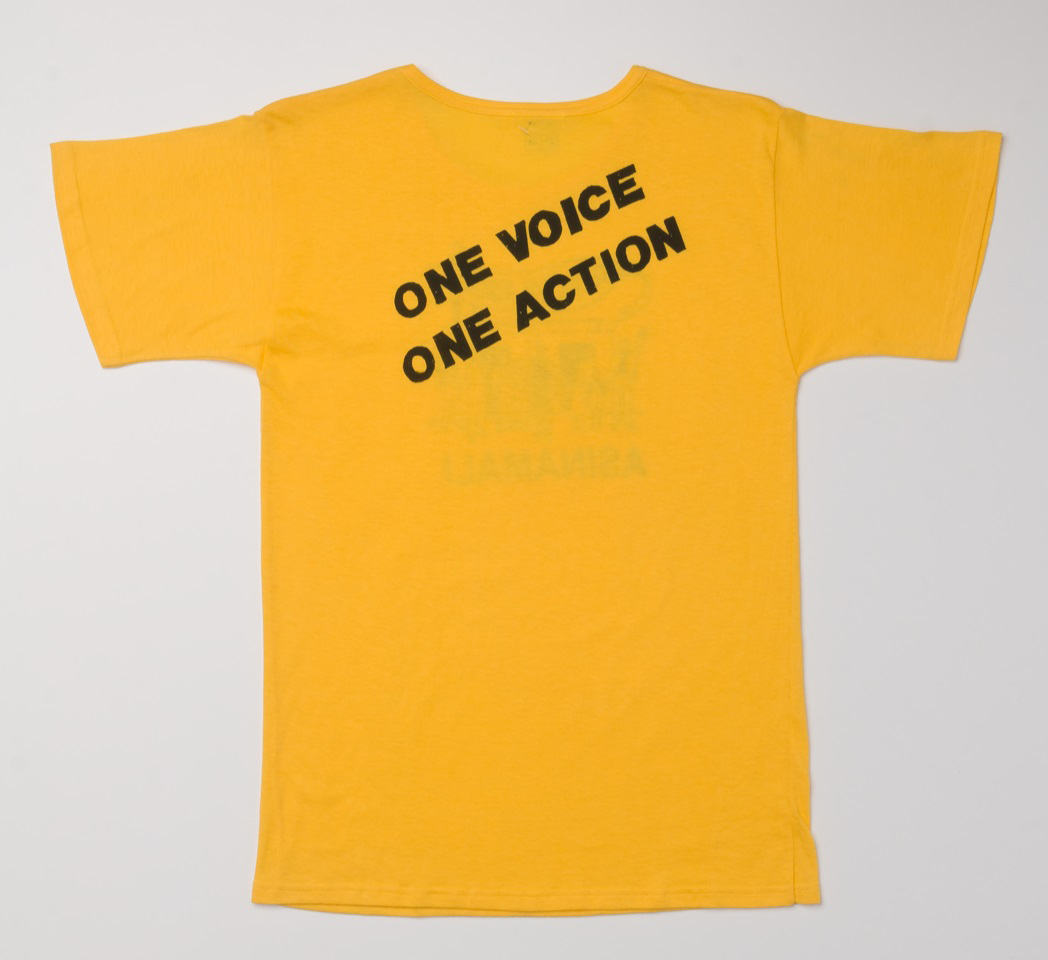
The back of a Duduza Civic Association T-shirt. The bright colours were meant to stand out to make the wearer and the slogan unequivocally visible.
“T-shirts with messaging are about self-expression. They’re personal, they’re ubiquitous but they’re also lasting and they’re still used in a similar way today.
“I think it’s important to have this SAHA collection of struggle T-shirts and to add to them with T-shirts from across the political divide at the time – it will help to tell the full story of our history,” he says. DM
Struggle T-shirts: Public testimony, political protest in on at Kalashnikovv Gallery, 70 Juta Street, Braamfontein till Sunday 2 December

















 Become an Insider
Become an Insider